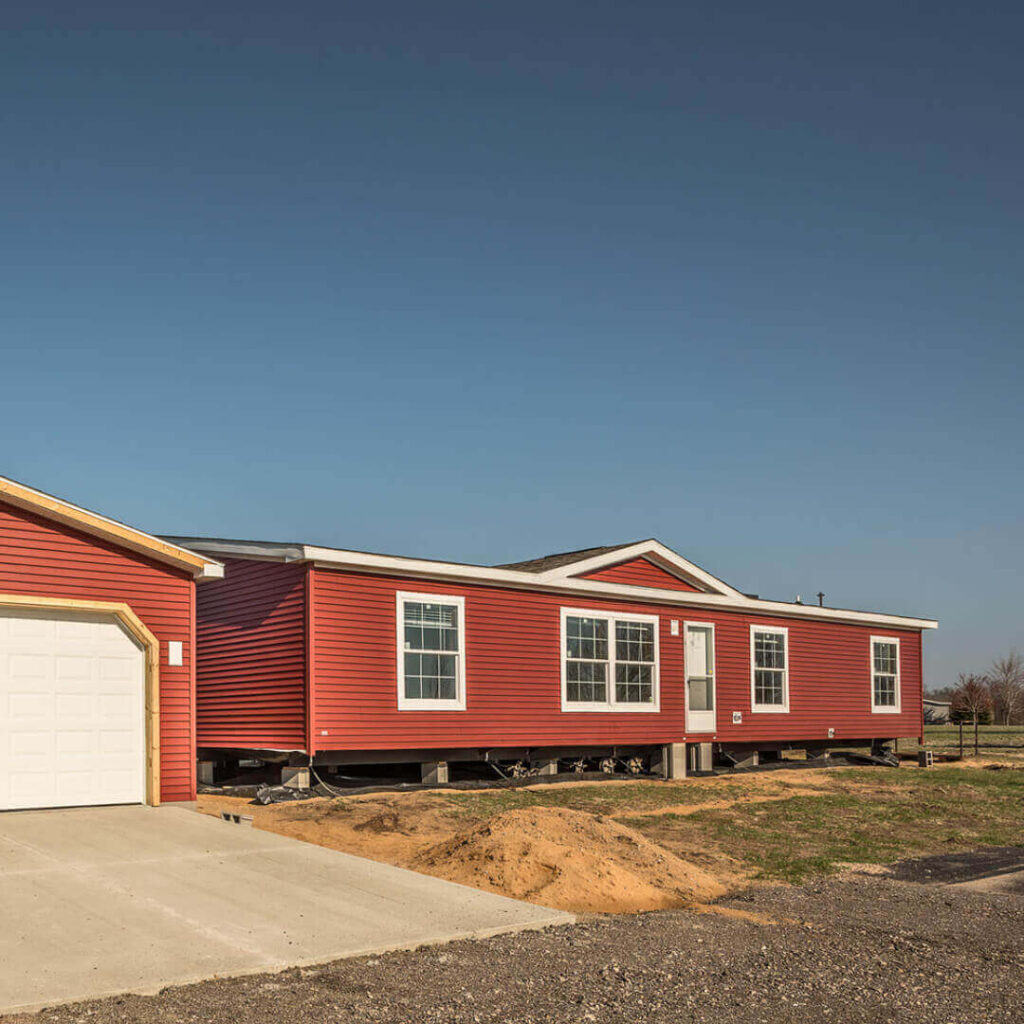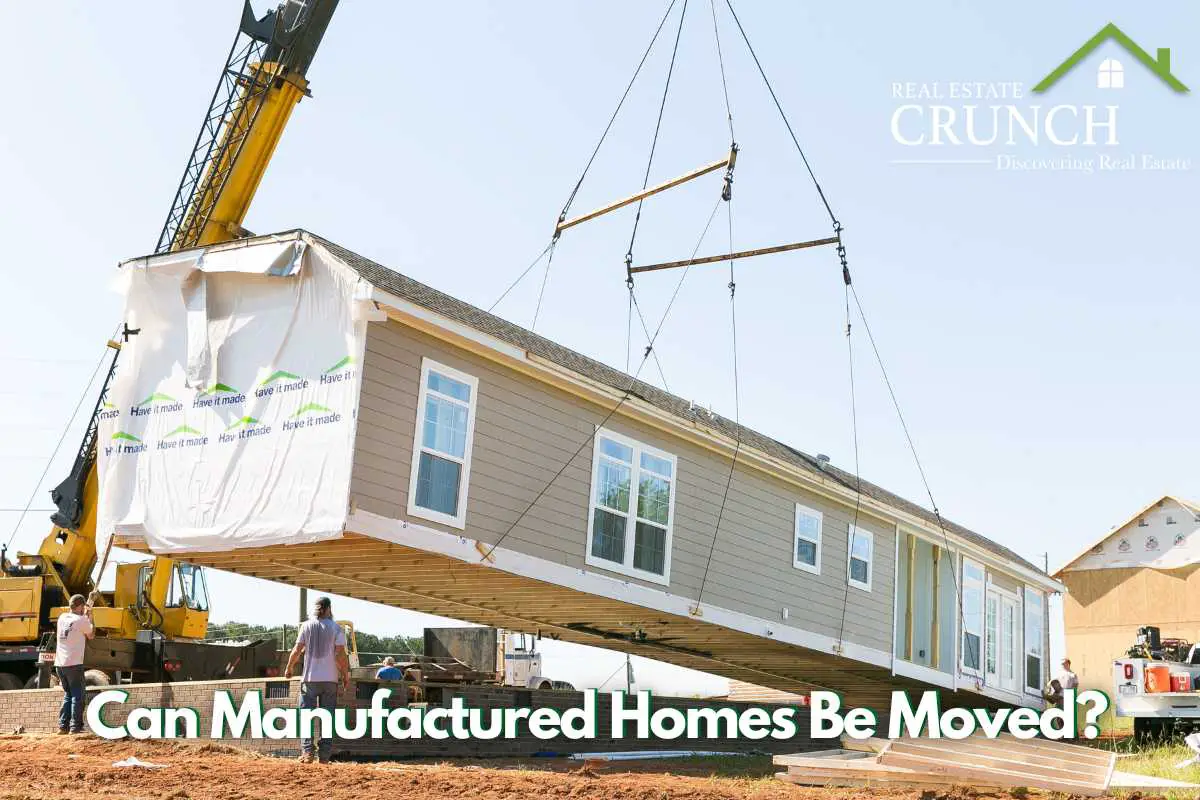Do you have a manufactured home? You may want to know whether or not your manufactured home can be moved.
Many manufactured homes cannot be moved. If you are going to move to a manufactured home, there are many things that you should consider about moving house. Today, many manufactured homes are grounded in place, and it can be challenging to tell a manufactured home from a traditional site-built home. Generally speaking, moving a manufactured home is both a costly and complex process.
Table of Contents
- Manufactured Homes Can Be Moved
- Are All Manufactured Home Moveable?
- What Is The Difference Between A Manufactured Home And Mobile Home?
- Related Questions
Manufactured Homes Can Be Moved
Manufactured homes, commonly known in the United States, are mobile homes, a type of pre-fabricated housing assembled mainly in factories and then transported to a site for use.

Today manufacturing homes are becoming more and more sophisticated than ever before. Many companies are making high-end luxury manufactured homes that look like traditional homes. Many of the same companies are also building manufactured homes that can be off the grid or are completely smart homes.
Because of the way that the homes are assembled and attached at the site, they can usually be moved to another location.
Aspects To Consider When Moving Manufactured Homes

Manufactured homes can be moved. However, there are a few things to consider before undertaking the process. Manufactured Homes are typically built in sections and transported to their final destination on-site.
- Cost – Moving a manufactured home depends on several factors, including distance traveled, house size, and permits/inspections needed. Generally speaking, moving a Manufactured Home will cost around $10,000 to $15,000. As it is not cheap to move a manufactured home in some cases, it may make more economic sense for you to sell the home instead of trying to move it.
- Local Laws And Regulations – It is essential to be aware of the local laws and regulations for moving Manufactured Homes in your area before making a move. These laws vary from state to state and can include obtaining permits or inspections before moving the home or setting up specific utility systems before the move.
- Zoning Regulations – Manufactured Homeowners should contact the local authorities regarding any zoning or location restrictions before moving their home. Knowing this information beforehand can make for a smoother and less costly Manufactured home move.
- Complex Process To Move Manufactured Homes – Moving Manufactured homes is a complex process that requires knowledge and experience to get it done safely and correctly. Finding a reliable Manufactured home moving service would be best to ensure the move is successful.
- Additional Structures On The Land – Many Manufactured homes today may also have additional structures on the land that can not be moved with the manufactured home.
Manufactured homes can be moved, though the process is complex and costly. Manufacture homeowners should research local laws before moving to avoid unexpected costs or delays. With the proper preparation and knowledge, Manufactured homeowners can make an informed decision about whether or not to move their Manufactured homes.

Listen To Our Podcast About Can Manufactured Homes Be Moved? by clicking here.
Are All Manufactured Home Moveable?
Even though Manufactured homes are mobile homes, you should consider a home so it can be moved. Many manufactured homes are grounded with concrete foundations, and deck sites are built with porches, garages, and landscaped patios.
This means the Manufactured homes can look the same as a traditionally built homes. That is why many modern manufactured homes, especially larger ones, are seldom moved once delivered. These homes are grounded in place, and moving them would be very expensive, and you may only be able to move some other structures.
What Is The Difference Between A Manufactured Home And Mobile Home?
In the United States, we often use the terms mobile home and manufactured home. The difference between a mobile and a manufactured home is the built date and time.
According to HUD, a factory-built home built before June 15, 1976, is considered a mobile home. A factory-built home built after June 15, 1976, is considered a manufactured home.
A manufactured home and a mobile home are the same things; they have several of the same common traits. Here are the common traits.
- Both are manufactured in a factory. Mobile homes are built in a factory and then taken to the property where they are set up.
- They are both usually built on a metal frame instead of having a crawlspace or basement.
- They sometimes have a tie-down to make it for a more permanent foundation.
A manufactured home and a mobile home are essentially the same types of home, but the main difference is the year in which each home was built. They fall under the same type of building codes and regulations for HUD.
Real Estate Crunch gives you real property and real estate information and advice. We offer a free monthly newsletter; you can sign up for our newsletter by clicking here.
We also have a weekly podcast called “Real Estate Crunch,” found on all major podcast platforms. Listen to our podcast by clicking here.
Follow us on our social media platforms – Facebook and Instagram.
Related Questions
Do Modular Homes Come With HVAC?
The modular home you purchase comes with some HVAC or heating and cooling system. What type of system will depend upon the type of mobile home you purchase and the type of technology and energy efficiency that the modular home manufacturer is using.
By clicking here, you can read more about Do Modular Homes Come With HVAC?
Single-Family Vs. Duplex Vs. Accessory Dwelling Unit Explained
A single-family dwelling unit is a unit occupied by just one household on one land. A duplex is a dwelling unit where the horizontal wall is shared between two occupants, and there will be two different entrances into their individual properties.
By clicking here, you can read more about Single-Family Vs. Duplex Vs. Accessory Dwelling Unit Explained

